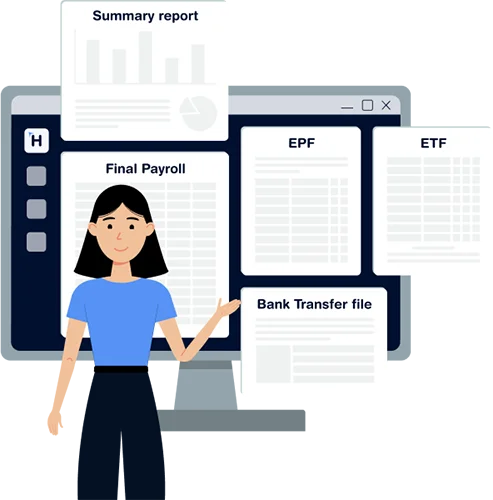In today’s evolving work environment, many Sri Lankan SMEs are found experimenting with hybrid work arrangements while continuing to manage on-site teams. Whether it’s an agency with sales staff on the road and admin staff working from home, or a retail business with rotating shifts, keeping track of who’s working where and when can be a logistical challenge.
This is where a modern time and attendance tracking system can make a real difference. Here are five ways such a system supports both hybrid and on-site workforces, helping SMEs stay organised, accurate, and fair.
1. Centralised Clock-In and Clock-Out for All Employees
Time and attendance software allows employees to check in and out from their phone, tablet, or computer, regardless of whether they’re working at home, on-site, or in transit. This flexibility makes it ideal for hybrid models, where presence isn’t limited to one location.
For example, a distribution SME can have warehouse workers clock in via a terminal at the site while sales reps check in via a mobile app from their client visits.
2. Accurate Tracking of Work Hours, Overtime, and No-Pay
When staff work irregular hours or switch between remote and in-person roles, it’s easy to lose track of actual work time, especially if using manual records or spreadsheets. Time tracking software automatically calculates work hours, breaks, late arrivals, and early departures, ensuring payroll calculations are accurate.
This means overtime and no-pay adjustments are based on reliable data, not guesswork.
3. Visibility into Team Availability Across Locations
One of the biggest pain points in hybrid setups is not knowing who is working or available at a given time. A real-time attendance dashboard allows managers to see which employees are clocked in, who’s on leave, and who’s late or absent — all in one place.
This helps in managing workloads, reallocating tasks, or making quick staffing decisions, especially in client-facing or shift-based industries like healthcare, retail, or logistics.
4. Simplified Compliance and Payroll Integration
Time and attendance software can be integrated with your payroll system to automate calculations for EPF, ETF, and APIT, based on the actual hours worked. This eliminates the need to manually reconcile paper timesheets or adjust for leave, holidays, or hybrid work schedules.
It also ensures compliance with local labour laws and reduces the risk of disputes with employees over worked hours or deductions.
5. Improves Trust and Transparency in the Workplace
When employees know that their attendance, overtime, and leave are tracked fairly through a transparent system, trust improves. This is especially important in hybrid teams where visibility is low, having a digital record removes the need for micromanagement or misunderstandings.
Employees are also more likely to follow rules and be punctual when the system holds everyone accountable equally.



